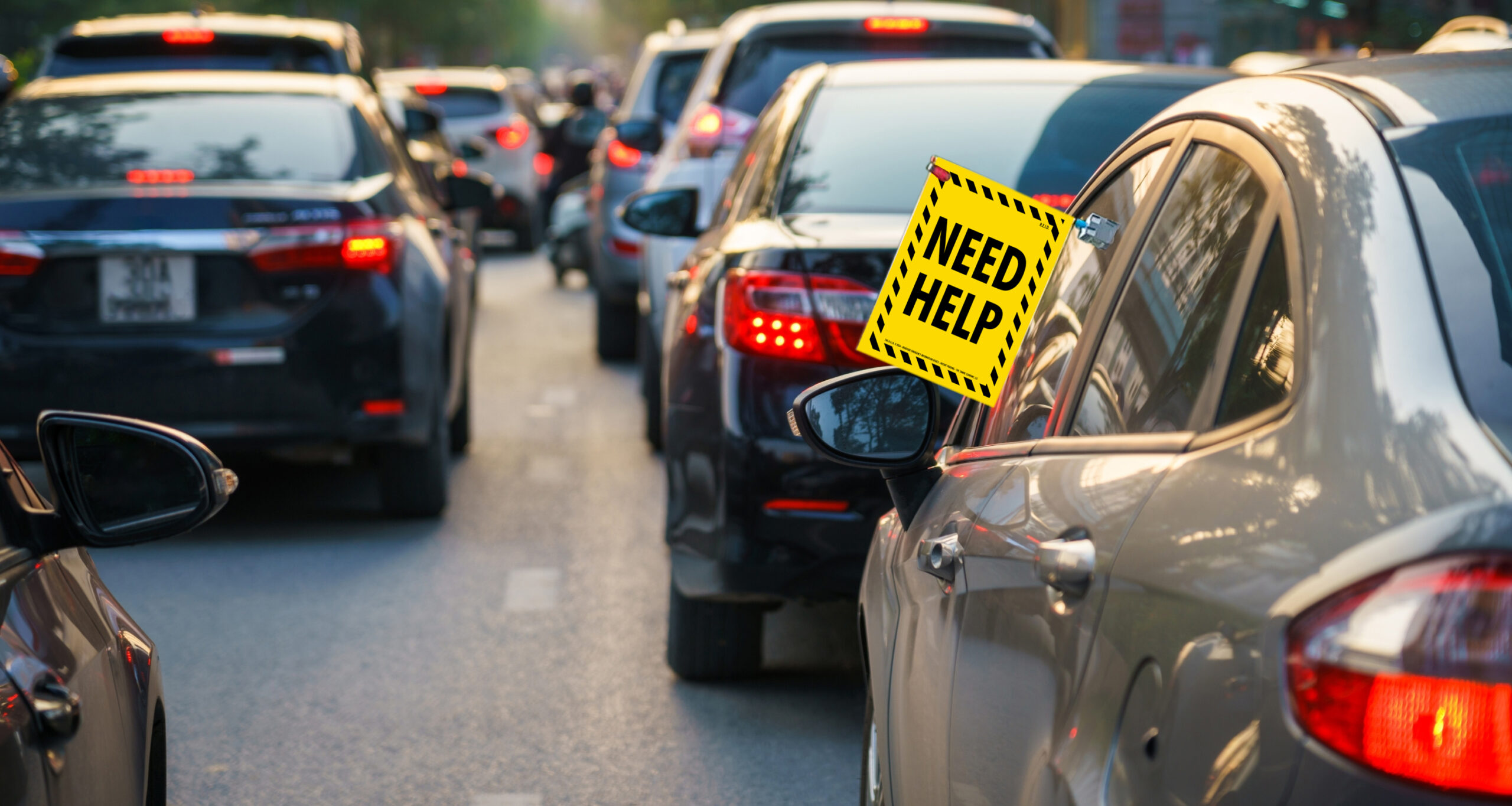The Science Behind a Danger Sign That Stops You in Your Tracks

A well-built danger sign can grab attention faster than a shouted warning, redirecting eyes, feet, and decisions in a heartbeat. Pair it with coherent emergency signs throughout the space and you create a visual system that cuts hesitation, clarifies choices, and turns confusion into motion. This article unpacks the brain science, color mechanics, typographic clarity, spatial strategy, and durability choices that transform static panels into reliable performance tools, especially when adrenaline rises and time compresses.
How a Danger Sign Triggers the Brain
Human vision favors speed over detail during tense moments, and a danger sign leverages that bias. Before language has a chance to analyze meanings, subcortical pathways flag sharp edges, hard contrasts, and directional shapes, tugging gaze toward the panel and priming the body for action. Broad silhouettes land first because the visual system processes coarse information ahead of fine detail, which is why thick borders, heavy icons, and unambiguous arrows outperform delicate linework when smoke, glare, or motion blur intrudes. The startle response collaborates with pattern recognition: triangles feel urgent because their corners behave like visual spikes, while bold chevrons imply motion and nudge orientation. If a panel makes viewers pause to decipher it, the neurological window that supports instant reactions begins to close, so the craft of the message must encourage reflex rather than contemplation.
Preattentive Features and Startle Response
Design that respects preattentive cues reduces the cognitive cost of compliance. High-contrast boundaries create abrupt luminance transitions that the periphery notices without effort, and those boundaries funnel gaze toward the icon or instruction that matters most. Directional symbols amplify that effect by tapping motion-sensitive regions of the visual cortex, which anticipate the flow implied by an arrow or diagonal. The result is a micro-sequence of behaviors—notice, orient, move—that occurs almost automatically when the visual grammar stays disciplined and uncluttered. In practice this means suppressing ornament in favor of strong figure–ground separation, simplified shapes, and ample negative space so the essential signal remains unmistakable from every approach angle.
Coarse-to-Fine Vision Under Pressure
During emergencies, people don’t scan line by line; they seize the big shapes and only later absorb supporting detail. That hierarchy should govern composition. Large icons that survive distance and haze must dominate the panel, while short, verb-first microcopy supports the instruction once the viewer is already engaged. Arrows deserve generous proportions because they translate instantly, and their placement near the decision edge—left for a left turn, right for a right turn—prevents ambiguity. Typography exists to reinforce that coarse-to-fine flow rather than compete with it.
Color Psychology in Emergency Signs
Color acts like a set of behavioral verbs, especially across integrated emergency signs. Red communicates stop and identifies fire equipment, yellow signals heightened caution, green guides toward routes, first-aid, and assembly points, and blue mandates required actions. These meanings rely not only on hue but also on luminance and saturation, because a dull red sinks into dim corridors and a grayish green disappears against concrete. Effective panels maintain robust contrast with their surroundings so the message persists when power falters or fog intrudes. Photoluminescent carriers or back-lit housings keep information alive during outages, and matte finishes help suppress glare in glassy lobbies. When colors drift across vendors or floors, comprehension erodes; consistent swatches protect the code and reduce the risk of hesitation at the exact moment decisiveness matters.
Red, Yellow, Green, and Blue as Behavioral Codes
The color grammar gains strength through repetition. When red always marks immediate hazard or essential fire gear, no one wastes time interpreting it; when green always frames exits and refuge, pathfinding accelerates. The system behaves like a promise between the environment and its occupants: identical cues yield identical actions across rooms, levels, and buildings. That predictability becomes priceless when visitors, contractors, or new hires must act without prior orientation. Inconsistent palettes break the promise and turn every corridor into a quiz, so governance around ink, film, or LED tone should be as strict as any other safety standard.
Contrast, Saturation, and Lighting Continuity
Because environments vary wildly, the palette needs support from lighting strategy. Dark hallways reward reflective sheeting that wakes up under headlamps, while stair cores benefit from glow materials that charge under ordinary illumination and guide movement when the grid goes dark. Exterior egress points demand UV-stable pigments to resist bleaching so meaning doesn’t fade with the paint. Everything feeds a single objective: legibility under the worst plausible conditions.
Shape, Typography, and Peripheral Capture
Shapes do the heavy lifting long before any sentence is read. Triangular carriers elevate urgency, rectangular fields stabilize information, and circles soften tone for permissions or amenities. Icons should read as silhouettes, not cartoons, because fine strokes disintegrate at distance and in haze. Typography plays a supporting role, but the stakes remain high. Humanist sans-serif families with open apertures prevent letterforms from collapsing under glare, and mixed case preserves distinctive word shapes that the brain recognizes quickly. Medium weights prove more durable than hairlines or ultra-bold styles when lighting becomes unpredictable, and measured spacing protects legibility when humidity, dust, or reflections invade. Size choices ought to reflect viewing distance rather than aesthetic preference, with letters large enough to be read from the spot where the decision must occur so nobody needs to approach a panel merely to decode it.
Triangles, Arrows, and Icon Grammar for a Danger Sign
A danger sign thrives on disciplined grammar. The signal word belongs at the top or alongside the icon, never allowed to compete with the pictogram itself. The directive should start with a verb and avoid abstraction, since crisp words like “Shut,” “Pull,” or “Cut power” get bodies moving while vague phrasing delays the response. Arrows should never float in neutral territory; they hug the edge closest to the intended turn so motion follows the shortest cognitive path. This grammar reduces uncertainty and teaches users what to expect, which is why a thoughtful panel behaves almost like a muscle memory once someone has encountered the system a few times.
Type, Spacing, and Word Shape in Emergency Signs
Across emergency signs, typographic consistency is not cosmetics; it is performance. Matching families, weights, and spacing create a familiar cue that the eye recognizes even before it reads. That familiarity yields speed, and speed preserves options. Excessive capitalization flattens word shapes and hampers glance recognition, whereas mixed case maintains distinctive contours. The more predictable the typographic infrastructure, the less likely a viewer will hesitate when the corridor narrows and seconds feel heavy.
Placement Strategy for Emergency Signs
The most lucid panel fails if it hides behind a door, a column, or a seasonal display. Sightlines govern results, so routes should be storyboarded the way a film director blocks a scene. Panels live where paths converge, not after a choice has already been made, and each marker should reveal the next before a person passes the current one. Mounting height follows eye level for walkers, with redundant placements when forklifts, shelving, or half-open gates interfere. In spaces prone to unreliable power, photoluminescent carriers and back-lit housings keep the breadcrumb trail intact. Above all, arrows must agree from start to finish along any escape line; one rogue pointer can undermine trust in the entire network.
Designing a Danger Sign for Real-World Chaos
Workshop floors, kitchens, and plant rooms rarely behave like tidy diagrams, so a danger sign requires context-aware positioning. Warnings belong beside the exact point where hands meet risk, not on the nearest clean wall. Controls that demand decisive action deserve panels inside the foveal zone at the moment of actuation, because a split-second glance downward is easier than a head turn under stress. In multilingual spaces, icons shoulder most of the load, while short, active microcopy clarifies the instruction without bloating the layout. When translations matter, they can live in secondary lines provided the main message remains legible at distance, and supplementary QR codes can carry deeper guidance without cluttering the carrier.
Validation Through Drills and Metrics
No layout reaches maturity without testing. Timed walkthroughs reveal whether first fixation lands on the right element and whether decision latency shrinks after adjustments. Power-off evenings verify that the glow pathway carries people through stair cores and along corridors, and newcomer trials expose weak links because fresh eyes search rather than autopilot. Photographs and inventories prevent slow degradation, catching peel, fade, or occlusion before those small erosions erase meaning. Improvement should remain empirical: if a revision fails to reduce hesitation, revert and try a different angle.
Materials and Durability Under Real Conditions
Materials determine whether the message outlives the environment. Rigid aluminum or composite panels shrug off weather along loading docks and façades, while high-tack vinyl adheres to curved housings or rough surfaces near machinery. Photoluminescent substrates store ambient light and glow reliably during outages, guiding descents and marking doors when the grid collapses. Retroreflective films pair with headlamps in utility corridors and yards where vehicles move after dark. Everything benefits from grime-resistant laminates that wipe clean and from UV-stable pigments that resist bleaching, because faded signage doesn’t merely look tired; it confuses. A schedule for inspection, cleaning, and replacement keeps the grammar intact and preserves the promise that each corridor communicates the same meanings every single day.
Photoluminescent and Reflective Technologies in Emergency Signs
Technology expands the toolkit for emergency signs without complicating the message. Glow coatings create a quiet safety net that requires no wiring, while back-lit housings push legibility through smoke and provide unmistakable path anchors in deep plan buildings. Floor-level markers complement overhead panels and help during crouched movement when ceiling smoke lowers visibility. The trick is restraint: the best systems avoid visual noise by reserving the brightest treatments for the most vital markers so the hierarchy stays honest.
Keeping a Living System
A signage program should evolve as equipment shifts, walls move, and processes change. After reconfigurations, routes deserve a fresh audit so arrows and icons still align with the new geometry. When new machinery arrives, nearby warnings and instructions must migrate from the old location rather than linger where they once made sense. Photographic logs with dates help teams track life cycles and budget for replacements before failure occurs, safeguarding continuity across seasons and staff changes.
Conclusion: Turning Insight into Action
The most persuasive insight from perception science is that people act on structure, not on decoration. A danger sign that honors neurological shortcuts, coherent color codes, disciplined typography, and honest placement will outperform a flashy panel every single time. Extend those same principles across your emergency signs, maintain strict consistency as your space evolves, and test the results with real observers in real conditions. When the system remains clear, durable, and predictable, the environment itself becomes a coach that whispers the next move even when the room is loud and the clock is unforgiving. In that moment, carefully engineered emergency signs prove their worth by turning panic into purposeful motion.


